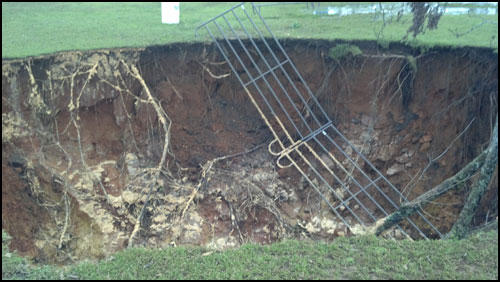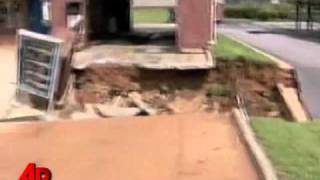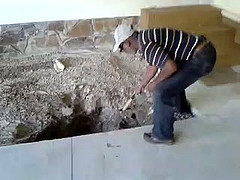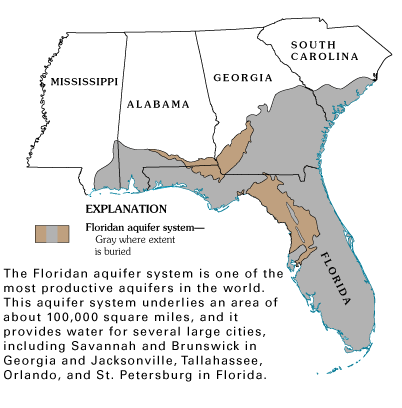 Sinkholes aren’t just
for Florida anymore: Albany’s got them.
Are sinkholes risky?
You may think so if one is under your house.
And here above the Floridan Aquifer you probably won’t know that
until your foundations starts cracking.
Maybe we should do something to prevent the problem,
and to help people who are affected by it.
Perhaps the Lowndes County government till pay attention when
somebody’s house falls into a sinkhole.
Sinkholes aren’t just
for Florida anymore: Albany’s got them.
Are sinkholes risky?
You may think so if one is under your house.
And here above the Floridan Aquifer you probably won’t know that
until your foundations starts cracking.
Maybe we should do something to prevent the problem,
and to help people who are affected by it.
Perhaps the Lowndes County government till pay attention when
somebody’s house falls into a sinkhole.
Jim Wallace wrote for WALB 9 March 2013, Expect more sinkholes,
Some sinkholes have opened up in South Georgia since the recent heavy rains.
And engineers and public works experts say they expect more sinkholes to develop in the coming weeks. It’s just nature at work, but it can really cause some problems.
Really? Does “nature at work” include sinkholes predictably forming after massive water pumping to sprinkle strawberries during a cold snap?
The WALB story pooh-poohs the possibility of anything like that Sefner sinkhole showing up in south Georgia, and then details two Albany sinkholes:
A sinkhole opened up in Martha Strickland’s backyard on Williams Street February 13th, causing a huge oak tree to fall onto her home. Later that afternoon two large sinkholes opened at Sherwood Baptist Church’s Legacy Park off Old Pretoria Road.
Engineers say based on history we should expect to see more in coming weeks. “Very typical for the Albany, Dougherty County area. We had a lot of this in 1994 and 1998 if you recall,” said Michael McNeal and Engineer for TTL.
Experts say they have never heard of anything like the Florida sinkhole situation happening in South Georgia.
 Really?
How about this one
that swallowed a Sonic restaurant in Cleveland, GA in 2010?
Sure, that’s in north Georgia.
But there have been sinkholes that swallowed houses in south Georgia.
Really?
How about this one
that swallowed a Sonic restaurant in Cleveland, GA in 2010?
Sure, that’s in north Georgia.
But there have been sinkholes that swallowed houses in south Georgia.
“Typically they are not that deep. They typically, the ones I’ve seen may be 20 or 30 feet deep at the most. Lot of them were shallower than that,” McNeal said.
That sounds deep enough to mess up your house pretty bad.
“No there is no need to panic about it,” Zimmer-Shepherd said. “On the other hand if you see the signs of ground that is starting to slough and subside you do need to pay attention to it.”
Signs like
that groundscan from VSU that Michael McCormick is holding
or
 the gaping hold under his garage?
the gaping hold under his garage?
Apparently sinkhole concern is high enough after Sefner that the New York Times thought it had to play down the risks. Michael Wines wrote for the NYTimes 15 March 2013, One Sinkhole Killed, and Many Others Opened, but Experts Counsel Not to Panic, which does at least note that sometimes sinkhole causes are not natural:
Of course, he noted, there are sinkholes, and then there are man-made sinkholes. Real sinkholes occur when rain naturally transformed into weak carbonic acid eats away particularly susceptible underground rock like limestone or gypsum — also known as karst — creating underground holes.
Man-made sinkholes are made the same way, only quicker. The Louisiana sinkhole is above a salt dome being mined by a brine-making company.
Limestone like the Floridan Aquifer that underlies all of Florida and most of south Georgia; the aquifer we are all mining for drinking water and irrigation.
Perhaps we should be concerned, just as we should have been concerned about overclearing and too much permeable development before the floods of 2009 and this year.
-jsq
Short Link:
